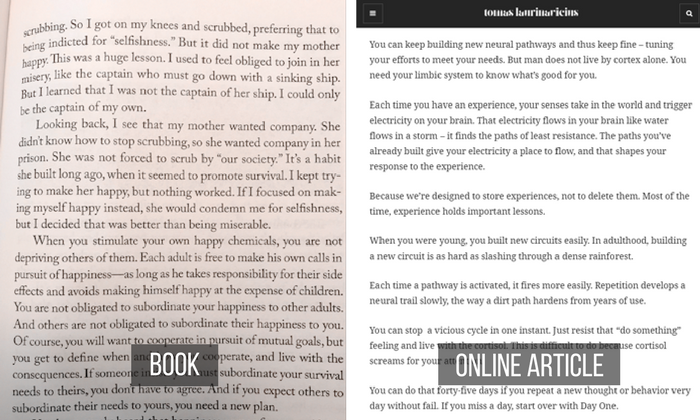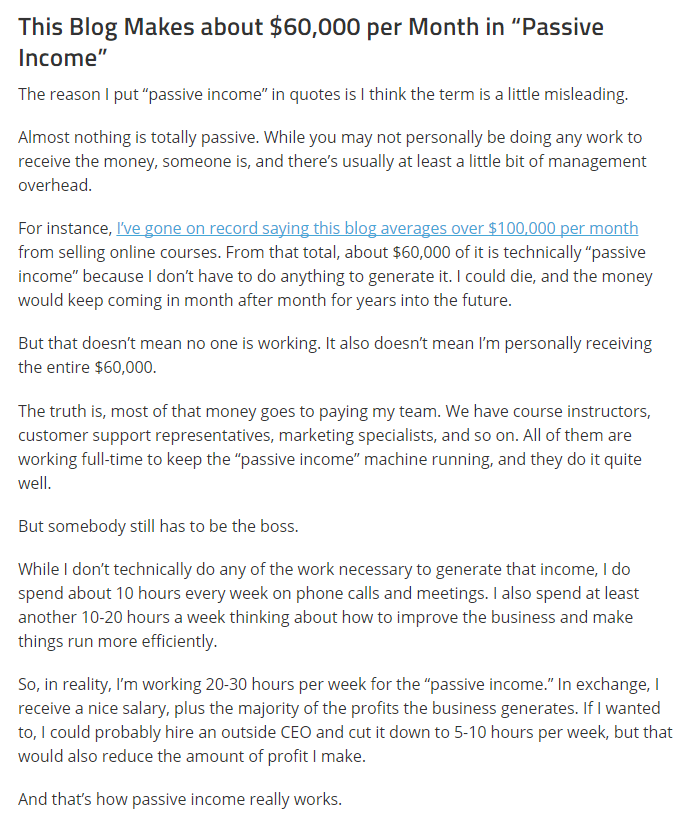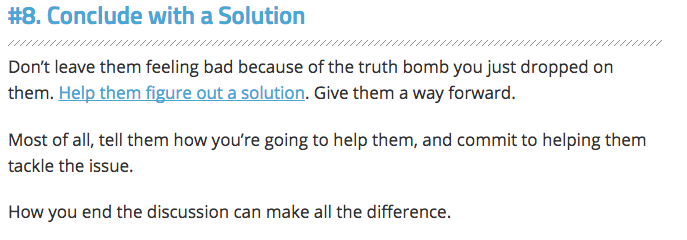Knowing how to write a paragraph (the right way) can be tricky.
The same writing process that earns you an A+ on your midterm would be thrown in the trash or deleted by an editor.
Why is that?
Well, one reason is what constitutes a good paragraph differs from medium to medium.
How to write a paragraph for your college professor is different than writing a paragraph for a freelance writing job.
The good news?
In this post, you’ll learn the differences. We’ll go over effective paragraph writing for the digital age, and we’ll touch on the writing skills and basics you need to know for school, magazines, and such.
But first, let’s look at why the rules for paragraph structure have changed…
Why Paragraph Writing Changed in the Digital Age
The main reason for the paragraph’s evolution is the way we consume media.
When we’re online, an onslaught of ads, pop-up notifications, cat videos, and vapid celebrity gossip are all competing for our attention.
As a result, writers and copywriters have had to adapt.
Shorter paragraphs. More transition words and phrases. Variation in rhythm.
Consider the drastic differences between this teacher-pleasing page from Habits of a Happy Brain (affiliate link) and this online article by Tomas Laurinaricius reviewing the same book:

In short:
When we open a book or magazine, we’re usually at home or somewhere quiet. We’ll set aside some time and give it our full attention.
But online, we scan content and decide, within seconds, whether to stay or go.
To survive in digital media, writers have to account for shorter attention spans and increased competition.
So, now that we understand the why, let’s look at the how.
The Rules of the 2024 Paragraph
Rule #1. In Digital Media, Short Paragraphs are Mandatory
Online, one of the easiest ways to instantly turn off your audience is to present them with a big wall of text that has few breaks and little white space.
We have adapted to expect and prefer paragraphs that are short because they look and feel easier to read. Short paragraphs are easier to scan, and they allow readers to consume the article in bite-sized chunks, which helps maintain their focus.
Consider, for example, the ease with which you can read the introduction to this article by Mel Wicks:

Yes, Mel Wicks uses empathetic language and easy-to-read prose, which no doubt enhances her clarity. But you can’t ignore the sense you get just by glancing at her article that it will be an easy read.
This is the effect short paragraphs have on readers.
In the above article, Mel’s introduction has ten paragraphs. The longest paragraph is 42 words, and seven of them have only 12 words or less.
So, what’s the new standard? How long should a paragraph be?
Well, in digital media your average paragraph should be between two and four lines. You can go over and under — some paragraphs are just one powerful word long — but stay close to that average and you should be fine.
Paragraph Length in Print Media (Or, How Many Sentences are in a Paragraph?)
The length of paragraphs in school papers, books, magazines, essays, and other print media is a bit larger.
How much larger?
It’s no longer the hard-and-fast rule it used to be, but writing paragraphs of three-to-five sentences remains the standard practice.
Rule #2. Rhythm Dictates the Next Paragraph
Rhythm is the new arbiter of words. It determines where paragraphs end and where new ones begin.
Rhythm in writing is hard to teach. It’s not an exact science and doesn’t follow hard rules.
The more experienced you become as a writer, the more you’ll develop your rhythm. But in the meantime, you can follow these basic guidelines for when to start a new paragraph:
1. Variation
While you want to keep your body paragraphs short in digital media, every paragraph doesn’t have to be (or need to be) short.
In fact, switching between short and long paragraphs will make your writing sing.
Here are a few noteworthy rules of thumb. You don’t have to follow these perfectly, but they’re worth remembering:
- If you just wrote one or two paragraphs that are four lines or more, shorten the next few paragraphs.
- If you just wrote one or two paragraphs that are only one line, lengthen your next few paragraphs.
- And if you just wrote three to four paragraphs of similar length, shorten or lengthen your next paragraph.
Too many same-sized paragraphs in a row will bore your reader. It doesn’t matter if it’s too many small paragraphs or too many long paragraphs.
Consider this excerpt from Jon Morrow’s post on earning passive income online:

See how he perfectly balances between short and long paragraphs?
Now imagine if the same excerpt was structured this way:
Almost nothing is totally passive.
While you may not personally be doing any work to receive the money, someone is.
And there’s usually at least a little bit of management overhead.
For instance, I’ve gone on record saying this blog averages over $100,000 per month.
From that total, about $60,000 of it is technically “passive income.”
Even though all of these paragraphs are short, this text feels monotonous.
Too many short paragraphs make a reader feel like they’re on a rollercoaster ride with no destination — they’re moving fast but they quickly get confused about where they’re going.
Ultimately, you want to guide your reader. And the only way to do that effectively is to recognize when your reader needs a few short paragraphs, a long one, or a bit of both.
Paragraph Variation in Print Media
Varying the length of your paragraphs in school papers, magazine articles, and books isn’t a commonly-discussed writing method, but it’s good practice.
Whether it’s your teacher or professor, a magazine subscriber, or a bookworm; every reader appreciates variation. Try to mix up the length of your paragraphs.
It’s a small change that can have a big impact.
2. Topic
While topic was once the ultimate indicator of a new paragraph, it is now one of many. Topic is still critical for clarity. If you change paragraphs at a topically awkward time, the split disturbs the reader.
Take, for example, this excerpt from Liz Longacre’s article:
A war to get your ideas the attention they deserve.
Your enemy? The dizzying array of online distractions that devour your readers.
This battle is not for the faint of heart.
There are so many learning curves. Plugins you’ll need to install. Social networks you’ll need to employ. Marketing techniques you’ll need to try.
Imagine these paragraphs were structured like this instead …
A war to get your ideas the attention they deserve.
Your enemy? The dizzying array of online distractions that devour your readers.
This battle is not for the faint of heart. There are so many learning curves.
Plugins you’ll need to install. Social networks you’ll need to employ. Marketing techniques you’ll need to try.
Notice the difference in how you read the original paragraph versus the variation.
In the original, the last paragraph tactfully emphasizes the difficulty of learning how to start a blog. But in the variation, you take a mental pause between “There are so many learning curves” and “Plugins you’ll need to install.”
And it feels off, doesn’t it?
The last three sentences are examples of learning curves, which means they are topically linked to the phrase introducing them (“There are so many learning curves”).
In digital media, readers still expect topics will — for the most part — stick with each other.
Paragraph Topics in Schools, Colleges, and Universities
Topics play an even more important role in print media; specifically, in academia where each paragraph has an introduction and conclusion.
In school, we’re taught to use the following paragraph structure:
- Topic sentence (or thesis statement) of the paragraph (the overarching, main idea of the paragraph);
- Supporting sentences that provide supporting detail to the paragraph’s main idea;
- Concluding sentence to repeat and/or reinforce the topic sentence.
Here’s how this kind of academic writing looks in practice:
The first sentence (topic sentence) tells the reader what to expect in the paragraph. The rest of the paragraph (the supporting sentences) supports the topic sentence by providing additional information. And the last sentence (the concluding sentence) wraps the paragraph up in a bow by mirroring the topic sentence.
3. Emphasis
Short paragraphs naturally add emphasis.
They can be used to highlight ideas you want the reader to take note of, but they can also be used for dramatic effect.
For example, check out Jon’s introductory paragraph to How to Start a Blog: Easy, Step-by-Step Guide for Beginners:
Jon’s introduction asks the reader a question with a long paragraph. And then, for emphasis, he adds: “But there’s not. It’s totally real.”
This strong paragraph conveys a dramatic turn of events. The shortness of the paragraph emphasizes this.
The longer paragraph preps the reader for the punch, and the short paragraph brings it home.
You don’t always have to go from a long paragraph to a short paragraph to create emphasis. You can also use a gradual decline in word count and finish with your main point. This builds the reader up to the punchline.
Here’s another example, taken from The Brutally Honest Guide To Being Brutally Honest.
The author, Josh Tucker, decreases word count over three relatively short paragraphs to bring attention to his closing sentence: “How you end the discussion can make all the difference.”

Think of paragraph length in the same way you think about the rest of your writing. Your word choice, sentence structure/length, and paragraph formatting all have a massive impact on what your article communicates.
Paragraph Emphasis in Print Media
The need to emphasize points in your content isn’t just for digital media. It’s great for academia and print media too.
Ultimately, paragraph emphasis is up to the creativity of the writer. Paragraph length is simply one tool at your disposal.
Another tool is italicizing or underline words in your content. Just be sure not to overdo it.
If you use too many italics or underlines, they can overwhelm your readers. Plus, they’ll eventually lose effectiveness.
Writing the Perfect Paragraph Isn’t Hard
Not anymore, anyway.
Despite the difficulty in grabbing the attention of today’s digital readers, you now know how to turn visitors into content absorbers by crafting easy-to-read paragraphs — paragraphs that are short, rhythmic, and varied.
And, you now know a few pointers for what it takes to craft content teachers, professors, and editors in print media will adore.
Know your audience, and know how paragraphs should be constructed for said audience.
Do that and you’re golden.
Readers will appreciate your courteous writing and — dare I say? — they’ll keep coming back for more.



